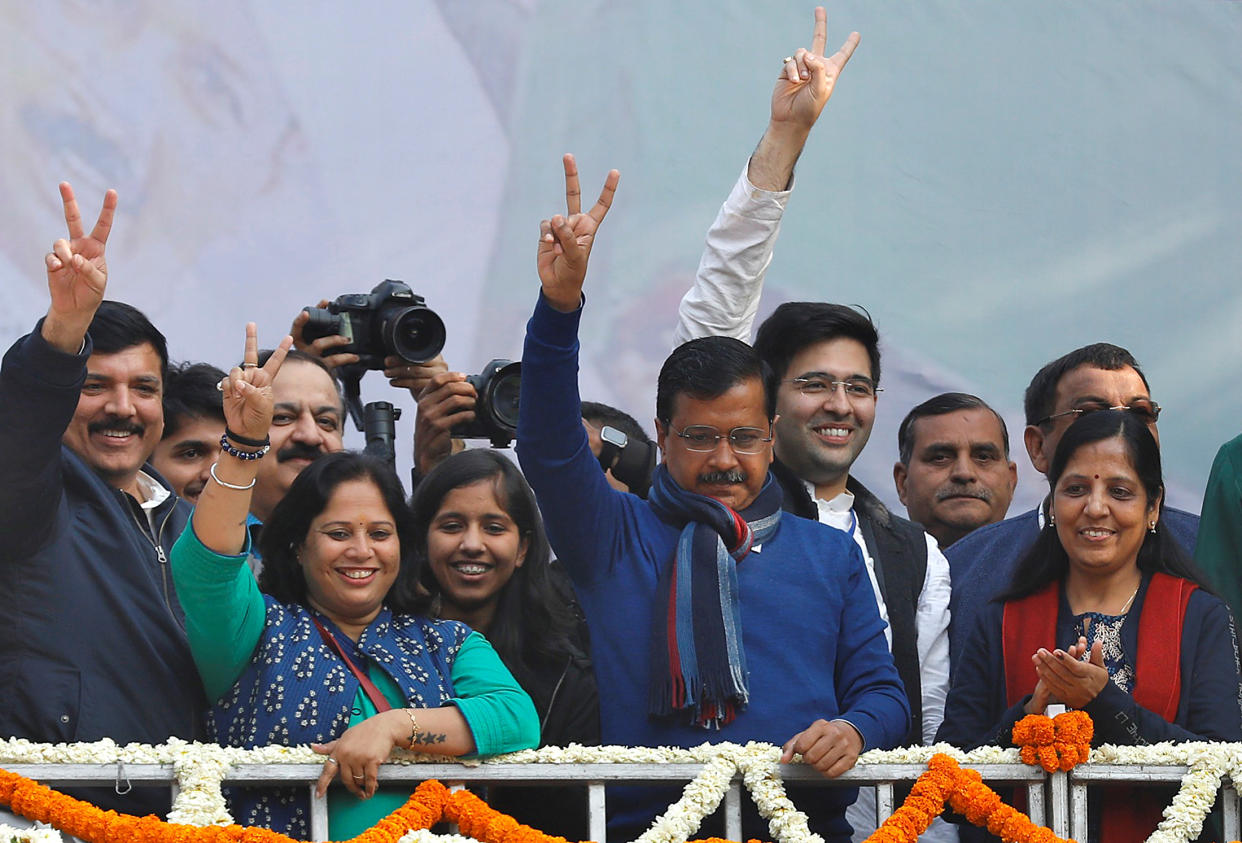AAP’s poll campaign was more mini-Modi than anti-Modi

Arvind Kejriwal roared back to power on Feb 11 in a high octave election.
Not only did the Aam Aadmi Party retain its vote share but saw only a small drop in seat share, which is remarkable given the five-year incumbency. It is lazy analysis to state that ‘freebies’ won the election.
While they definitely played a role and especially with the lower middle class and poorer sections of Delhi, it was also ‘posh’ colonies of Delhi that voted for AAP.
Sure everyone loves a freebie, and I have in the past few months encountered many financially secure people who are quite delighted at not receiving bills.
So freebies played a role, but the impact would vary from demographic to demographic. Being a politically mature city, the analysis of the mandate and the voters is a multi-layered one.
However, what we also saw in the campaign was Kejriwal’s Modi makeover. Even post elections when AAP spokespersons made it a point to repeatedly mention the ‘Kejriwal Model of Development’ sound familiar?
Kejriwal’s national ambitions are well known. However, as the leader, even a dominant one of a quasi-state, he will have to win a full-fledged state to be taken seriously amidst and by the galaxy of leaders who also stake claim to the same prominence.
The Congress has ceded far too much space in the public consciousness despite holding state governments, and this space is the one AAP intends to fill.
AAP’s campaign of going soft on BJP saw activist Kejriwal stop himself from going to Shaheen Bagh, the epicentre of political discourse, and even citing how it was inconveniencing the general public.
The recitation of the Hanuman Chalisa and visits to the temple -- as party leaders like Amanatullah Khan ran a communal campaign and were active around Shaheen Bagh and present with Sharjil Imam who is under investigation for sedition because of the inflammatory speech he made concerning the Indian state -- were a tricky balance.
The latter’s campaign secured a complete polarization of the Muslim vote. It resulted in a massive margin of victory for the MLA and across other seats with a dominant Muslim population, cutting off the chord that connected the community with the Congress and coming out against the BJP.
The Hindus, despite attempts at counter polarisation by some BJP leaders, didn’t respond in the same vein. All seats in the areas where Anurag Thakur and Parvesh Verma made these speeches were lost. So it is clear that while Muslims voted en bloc, the Hindu voter did not and neither was it put off by a communal campaign by a Muslim candidate.
AAP’s strong communication strategy ensured that the public inconvenience that has seen PILs filed in the courts provided that the public viewed Shaheen Bagh’s presence as a result of the Central Governments inaction in clearing the site, Kejriwal commiserated with their frustration as his deputy stood in solidarity with the protestors. This double-speak passed by comfortably and did the job of not alienating the Muslim community. This despite the fact that the Congress sent senior leaders like Shashi Tharoor and Mani Shankar Aiyar to express solidarity with the protestors.
And finally for the other significant factor, Narendra Modi. Kejriwal who has in the past engineered direct conflict with the prime minister, from contesting against him in Varanasi in 2014 to calling him a psychopath, steered clear of mentioning the Prime Minister.
Rahul Gandhi’s ‘danda maro’ call stands in stark contrast, and the Congress’s fate is for all to see. Kejriwal having just seen a drubbing in the Lok Sabha election where PM Modi was a direct beneficiary of the vote, refrained from criticising the prime minister, instead using the abuses hurled at him to make his personal political points.
His pragmatism in recognising that he cannot compete with a popular leader like Modi at this point of time shows that Kejriwal has learnt the game of patience.
Also, that the AAP didn’t contest BJP on its ideological positions is significant. Hence the hyperbolic headlines of the defeat of a certain kind of politics, etc is just bravado, there was never any direct conflict on ideological positions. In fact, AAP’s campaign was more mini-Modi than anti-Modi, on multiple fronts.
For those who have been observing the young party’s trajectory, this is an interesting development, from direct and daily conflict to reserve shows how the advent of Narendra Modi in national politics – the fulcrum of Indian politics has shifted to the right.
From tweeting images of a jhaadu chasing a Swastika in March 2019, Kejriwal now recites the Hanuman Chalisa, and his acolytes credit his win to one for Lord Hanuman. A transformation in less than a year.
On the other hand, the Congress whose top leadership has often taken far-left public positions even ignoring the advice of its own leaders is increasingly facing irrelevance.


